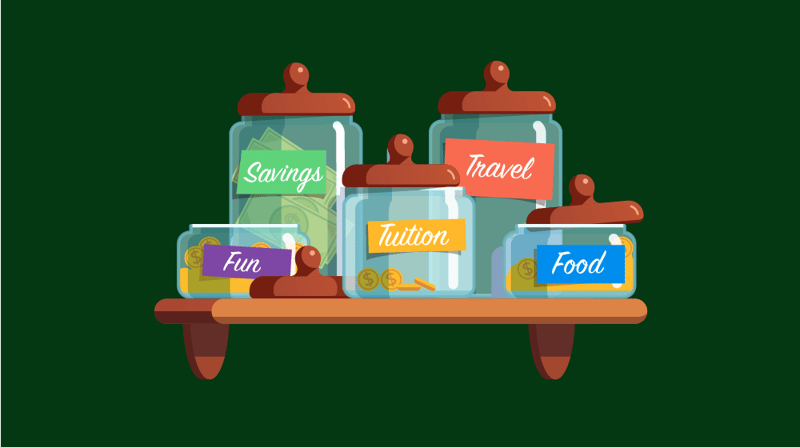Education is about fostering less tangible qualities and helps develop habits of students to prepare them to be contributors to the world.
Higher education should to always be providing education in and outside of the classroom that is deeply connected to the lives of students. How exactly are educators building the best undergraduate education for students while trying to accomplish this goal?
Through meaningful experiences.
And not just any kind of experience, but activities they will reminiscence about for years to come, far past their time out of college.
Before students come back from break, read about the modern college student. Look at the various traits and characteristics of students you want to engage. The different types of students you identify will fulfill some type of persona, or what each student represents in terms of background, interests, needs, concerns, and motivations. If you’re looking to attract students to programs or events, you need to know who they are and what interests them.
Brandon Sousa, #SAGrad at the Indiana University of Pennsylvania’s Student Affairs in Higher Education (IUP SAHE) graduate program describes developing strong relationships with students,
If you take the time to meet students where they are and learn about their culture, they just might do the same for you…
— Brandon Sousa (@Dr_S0us) January 5, 2016
Marketing items like giveaways and swag generate initial interest for a program and provide instant gratification for the student. It’s crucial to understand that students are looking to fill their college career with meaningful moments and less and less of items that will be tucked away in a drawer for years to come. This means that institutions of higher education need to shift their paradigm to match their students: the mindset of providing opportunities rather than giving away material items.
If students receive similar types of giveaways or swag to attend programs on campus on a regular basis, the perceived value of the item(s) will decrease over time. How many pairs of neon sunglasses does one really need?
For example, think about how you feel when you have a bite of your favorite cookie fresh out of the oven. It makes you happy, giving you high satisfaction. What about after you have one and want a second? It doesn’t make you quite as happy because you’re more full and it has a familiar flavor. Your satisfaction from the first cookie to the next has decreased, and it’s lower for the third cookie and so on and so forth. You’ll be happier you didn’t have the second or third cookie. Our Happiness Expert Mike Janofsky tested out this theory, it’s true.
Think about it: at the end of the college experience, do you think students will be reminiscing about the fact they obtained an airbrushed bag, or will they remember the memories they shared with the people who shaped who’ve they become?
In this post, we dive into reasons why student affairs professionals should allocate funds to develop meaningful experiences for students they want to attract and engage from their first-year far into their post-graduate involvement as alumni.
Material Items Versus Experiences
Compared to previous generations, research shows that students who acquire new life experiences are happier than students who obtain new material possessions, like an iPad or a gift card (Boven, 2005).
For most people, material goods provide satisfaction for only a short period of time.
According to the Huffington Post, people who often obtain new material items rather than experiencing new opportunities often undervalue the material item almost directly after acquiring it. The study highlighted explains that people have a hard time estimating monetary value on memories; therefore, it makes more sense for them financially to hold onto material goods.
In another study by the Journal of Positive Psychology, people were asked to prioritize happiness when obtaining a material item. After they were given the item, the participants realized they’d be happier with a life experience that was a greater value to them and would have sustained their happiness for a longer period of time. They also noted the anticipation of the experience may have increased their happiness. People are often more excited about an experience because their imagination wanders about all of the possibilities that may happen during or after the event.
Although different on every college campus, most students in Generation Y are looking for experiences – and they don’t necessarily have to be a sizable, expensive, or even make them happy. Dr. Thomas Gilovich, a psychology professor at Cornell University, explains that even if the person has a negative experience, if they have a chance to talk about it to someone who is willing to listen, their perception of the experience increases.
“Our experiences are bigger part of ourselves than material goods. You can really like your material stuff. You can even think that part of your identity is connected to those things but nonetheless they remain separate from you. In contrast, your experiences are really apart of you. We are the sum of our total experiences.” – Dr. Thomas Gilovich
Gilovich’s prior research also shows that experiences tend to make people happier because they’re less likely to measure the value of their experiences by comparing them to those of others. The millennial generation often compares themselves to each other often (often through social media) and having a new life experience helps reduce judgments on a peer level.
Allocate Funds to Experiences
It’s not solely a generational shift, either.
Our whole society is becoming more conscious of what it means to own material goods. It’s easier to travel or move when we own less stuff. New attitudes are emerging in support of living a minimalistic life in order for people to gain new perspectives and life opportunities.
Instead of going against the grain with this notion, which is the tendency of most institutions, #SApro’s need to leverage it.
It’s important for institutions to assess their student’s co-curricular experience and analyze how funds are allocated to provide students with a diverse assortment of experiences throughout college (i.e. look at how multicultural education is funded on campus – are enough funds going to appropriate resources?).
Meaningful experiences outside of the classroom directly correlate with retention. #SApro Kimberly White explains why creating experiential learning outside of the classroom can positively impact students’ studies and boost their love of learning overall.
Tap Into Student Aggregate
As institutions’ shift their perspective from “what can we giveaway” to “what can we provide” it doesn’t mean time and resources have to be re-allocated dramatically. Professionals need to think creatively about the resources already at their fingertips, whether it is connecting students to professionals or projects on campus.
The University of South Florida St. Petersburg is a great example of an institution utilizing their student aggregate who held majors in art and graphic design. Administrators realized they needed to tackle university projects, one of which included re-painting stairwells. Instead of having outside painters come in, their Student Government Association funded a competition to maximize their student’s experience and provided them with a meaningful opportunity. Costs associated with painting the stairwells would have come close to $20,000. Administrators and student came together to create a meaningful experience for students involved and it came at a less expensive cost to the university.
According to student development theorist Alexander Astin, it’s important to help empower students to create their own meaningful experiences. He explains that when students take on their own responsibilities they develop a greater sense of interpersonal and intellectual competence and a greater meaningful philosophy of life (1993). He also explains that college students shift their focus to an experience-oriented mindset as they transition to an institution.
College students tend to become less materialistic and more idealistic during the college years. -Alexander Astin
Here are ideas to encourage learning peer-to-peer learning among college students:
1. Hold student panel discussions on salient issues
Use student lead panels as an opportunity to gain student feedback on the college experience or around a specific topic. Astin notes that these type of opportunities are beneficial to students because they often view discussions with peers, particularly about race, gender, and sexual preference as a platform for expressing advocacy and understanding how to accept viewpoints on controversial issues.
2. Partner with community experts to facilitate dialogue
Sometimes students feel like they live in a college bubble and healthy dialogue experiences introduce them to the notion of networking and thinking beyond the confines of a campus. Inviting experienced facilitators into the conversation around issues of diversity, for instance, helps with breaking down barriers surrounding difficult dialogue and may encourage students to speak openly about how stereotypes are perpetuated in their communities. Most importantly, community leaders help students think and reflect critically about their impact on society as an individual.
3. Bring in community leaders, elected officials, or notable alumni
Students are more likely to endorse discussions with peers as opportunities to learn from others, to have their views challenged, and to listen to others with an open mind. Holding discussions that emphasize small group activities from experienced leaders gives students a chance to exchange knowledge with fellow students in a educational setting. This type of environment is beneficial to learning outside-the-classroom because students tend to empathize with others’ personal experiences to inform and change their views (Astin, 1993).
Capitalize on Data to Personalize Experiences
Using the right tools to capture data on student involvement, educators have the opportunity to support students in many ways. From learning management systems, to dining cards, events attended, and social media channels, universities have access to a mountain of data that can be utilized in a holistic way to optimize student success.
Obtaining data and using it to personalize student experiences gives student affairs professionals the opportunity to understand students before they arrive to college and how to promote engagement as alumni. Data about student journeys, successes, and failures can be captured through technology while improving individual student experiences and collective outcomes across higher education to understand students in many ways.
Many institutions blindly market to students based on perceived interests or what they indicated they were interested in during their first-year. As students interests change over time, people in student success roles need to be monitoring these changes and identifying characteristics of student groups to enhance the college experience.
TL;DR. Money’s better spent on experiences, not stuff. Students learn more through experiences that compliment academics. Use data and talk with students to get experiences right, and they will become the incentives to get involved, rather than giveaways.
References:
Astin, A. W. (1977). Four critical years. San Francisco: Jossey-Bass.
Astin, A. (1993). What matters in college?: Four critical years revisited. San Francisco: Jossey-Bass.
Frakt, A., & Piper, M. (2014). Microeconomics made simple: Basic microeconomic principles explained in 100 pages or less. United States: Simple Subjects.
Kelley, S. (2013). To feel happier, talk about experiences, not things. Cornell Chronicle.
Van Boven, L. (2005). Experientialism, materialism, and the pursuit of happiness. Review of General Psychology, 9(2), 132-142.





